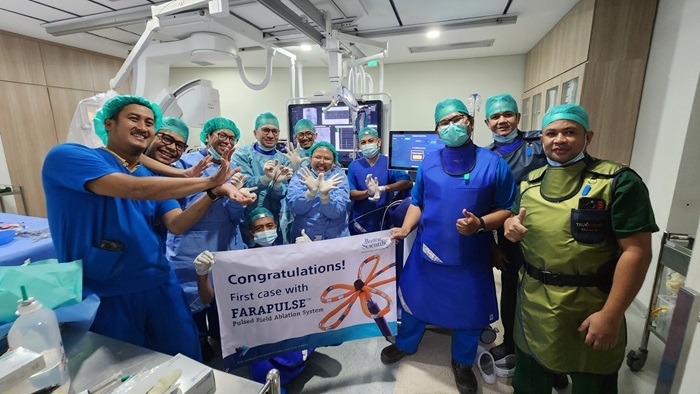Mandaya Puri Hospital is also the first hospital in Banten to implement the Pulsed Field Ablation (PFA) method for treating arrhythmia.
Contents
Understanding Arrhythmia and Atrial Fibrillation (AFib)
Arrhythmia is a condition where the heartbeat becomes irregular. One of the most common types is Atrial Fibrillation (AFib), affecting approximately 40 million people worldwide. If left untreated, AFib can potentially lead to stroke, weaken the heart, and even cause heart failure.
Symptoms of AFib include heart palpitations, chest pain or tightness, shortness of breath, dizziness or headaches, extreme fatigue, and difficulty exercising.
PFA Cardiac Ablation Procedure at Mandaya Puri Hospital
Unlike traditional 3D & 2D cardiac ablation procedures that use heat or cold energy, the PFA method utilizes strong electrical pulses to repair damaged areas of the heart that trigger AFib.
During the procedure, a cardiologist inserts a catheter into the patient’s heart to target specific areas. The catheter then delivers energy to the heart. Once the procedure is completed, the catheter is removed from the patient’s body.
The PFA cardiac ablation procedure at Mandaya Puri Hospital was performed by Dr. Sebastian Andy Manurung, Sp.JP, Subsp.Ar(K), FIHA, a Consultant Cardiology and Vascular Specialist specializing in arrhythmia treatment.
The procedure was successfully carried out with a relatively short duration. The patient’s arrhythmia was effectively treated. Two days after the PFA cardiac ablation, the patient’s heart rhythm was re-examined, revealing a normal sinus rhythm, meaning that no atrial fibrillation patterns were detected.
Advantages of PFA Cardiac Ablation for Arrhythmia Treatment
Compared to traditional 3D & 2D ablation methods that use heat and cold energy, PFA cardiac ablation offers several advantages.
According to Dr. Sebastian, one of the main differences between 3D & 2D ablation and the PFA method is the energy delivery process.
While 3D & 2D ablation delivers heat and cold through a single-point catheter, PFA uses a multipoint catheter, allowing simultaneous energy delivery.
“In PFA, the catheter used is a multipolar catheter, which can deliver energy simultaneously,” explained Dr. Sebastian.
“Because the target tissue is more selective and does not damage the surrounding tissues, the side effects of ablation energy can be minimized,” he added.
Dr. Sebastian further explained that since PFA cardiac ablation can deliver more energy at once, the procedure duration is significantly shorter.
“A 3D & 2D ablation procedure can take 3-4 hours, while PFA cardiac ablation can be completed in less than 2 hours,” he continued.
Additionally, PFA cardiac ablation has fewer complications, with a major complication risk of less than 1%, compared to thermal ablation, which has a 2.5% major complication risk.
Moreover, PFA cardiac ablation has a higher long-term success rate in treating AFib arrhythmia compared to other types of cardiac ablation.
If you are interested in learning more or considering PFA cardiac ablation for atrial fibrillation arrhythmia treatment, visit Mandaya Royal Hospital Puri. Our team of specialists, including Dr. Sebastian, is ready to answer any questions regarding the PFA cardiac ablation procedure.

